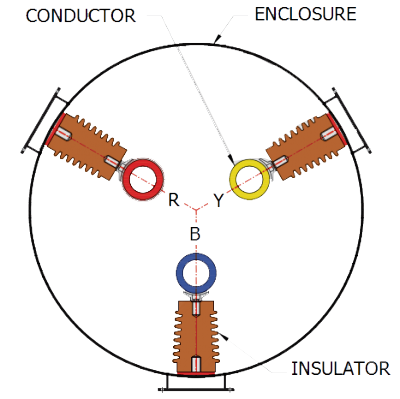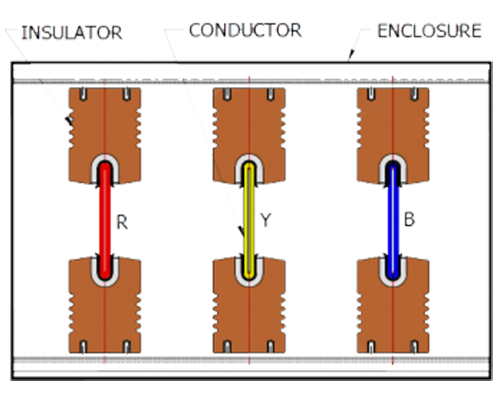
Non-Seg & Seg Phase Bus (Busduct)
9
9.1 Introduction
Air-insulated live conductors, supported on insulators and enveloped in a common metal enclosure are the earliest forms of Busduct. Even today, this principle governs most power connections in low and medium voltage applications up to a system rated voltage of 36 kV. The Busducts are designed and manufactured not only for AC (three-phase or three-phase with neutral) power connections but also for six-phase AC connection between rectifier transformer and rectifiers and as well as a two-pole DC connection.
Line-to-ground faults are common in a power system. In medium voltage systems, the neutral of the transformer is grounded through a resistor to limit the line to ground fault current. All generator neutrals are earthed either through a resistor or by a combination of neutral grounding transformer and neutral grounding resistor. Busducthas earthed metallic enclosures. An arcing fault will ionize the air in the vicinity and depending upon the intensity of ionization and time, the ionized gases can spread to the neighbouring conductor resulting in a phase to phase or even a three-phase fault. If the ionized gases due to arcing can be confined to a limited area by the introduction of a phase barrier between the two-phase conductors, then the probability of a ground fault developing into a phase to phase or a three-phase fault can be minimized. Installation of the phase barrier can increase the factor of safety to a considerable extent. If the intensity of the arcing fault is high, the arc may penetrate through the barrier and initiate in a phase to phase or a three-phase fault.
The shape of a Busduct enclosure can be either circularor rectangular. Busductfor three-phase four-wiresystems has, only a rectangular shape. Busducts are broadly classified as non-segregated phase bus and segregated phase bus.
9.1.1 Non-Segregated Phase Bus

Circular Enclosure (NSPB) (Figure 9.1)

Circular Enclosure (NSPB) (Figure 9.2)